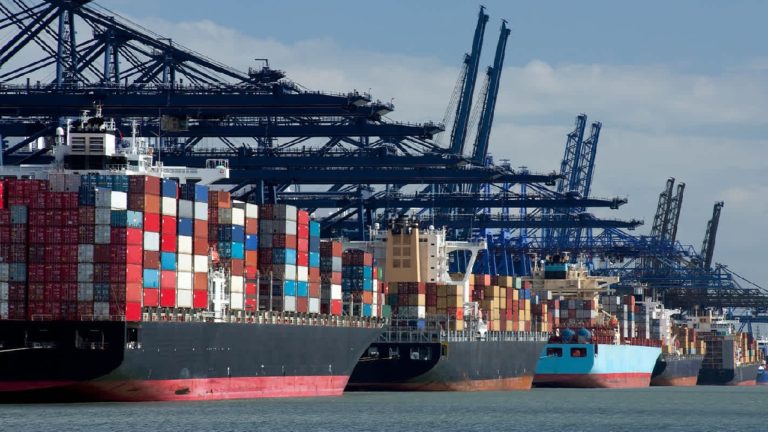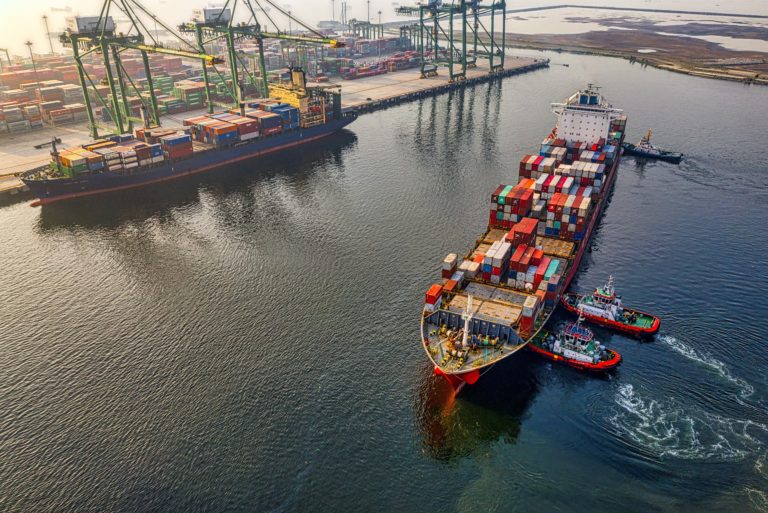With a growing flotilla of cargo ships waiting to dock on both coasts, a shortage or truck and rail capacity, major employers shutting down due to lack of parts, and a consumer realization that they may not be able to get everything this holiday they had expected, it’s no wonder that the federal government is looking for ways to get involved.
On October 13, 2021 President Biden convened a press conference specifically dedicated to supply chain. At that meeting the President announced that the federal government had brokered a deal with the Ports of Los Angeles and Long Beach and the Longshoreman’s union to operate 24/7 although without a clear start date.
President Biden stated:
“Strengthening our supply chains will continue to be my team’s focus. If federal support is needed, I will direct all appropriate action. And if the private sector doesn’t step up, we’re going to call them out and ask them to act. Because our goal is not only to get through this immediate bottleneck, but to address the longstanding weaknesses in our transportation supply chain that this pandemic has exposed.”
We are all hoping for a quick fix to get everything set in time for the holidays, but while moving these two ports to operate 24/7 is a needed and helpful step, it unfortunately won’t be the silver bullet we are looking for. Supply Chains take time and require long term thinking and a robust and stable framework.

To that end I would like to suggest 4 ways that the federal government could take meaningful steps to solve and prevent issues long term.
1. Create a legal framework for fully autonomous vehicles
Many of the major players in this space have all but declared autonomous driving as a solved problem. We have vehicles on the roads today that offer driver assistance and auto pilot with a driver present and there is evidence that autonomous vehicles are actually safer than those piloted by people.
Couple this with a chronic shortage in commercial drivers, specifically long haul trucking and autonomous commercial vehicles seems like a no brainer. The technology is practically there, but our legislative framework hasn’t caught up yet. For example, when there are accidents, who is ultimately liable for any damages? The company that owns the truck? The company who built the truck? The person who wrote the code? We need a comprehensive legislative framework that sets the guardrails for the private sector to work within. Don’t forget charging stations and standardized infrastructure – today different brands require different types of plugs. I think the market will eventually figure this out but there’s no reason why we can’t accelerate the development of a large scale charging infrastructure by standardizing plugs the way Europe has.
2. Actively Promote Port Automation
As the country is actively learning this holiday season, our economy is heavily dependent on the health of our port and airport infrastructure. Container and air freight volumes continue to grow at a dizzying pace and we simply haven’t kept up. A part of this is due to working hours and a general labor shortage that the administration is addressing in two ports, but in the same way that growing families have to upgrade to a bigger car with more seating; sometimes we need better equipment to do the same job more effectively.
The answer here is automation. This is a solved problem in other parts of the world and the US is falling behind. As ship sizes continue to grow not only will our ports need to be upgraded to service them, but we will need to more effectively orchestrate the loading and unloading of these mega vessels.
This will be touchy politically, but I honestly believe that there is a way where we can maintain or increase the number of jobs at the ports while getting a step change in efficiency.
3. Free the Post Office of its pension obligations
The post office handles more ecommerce packages and makes more deliveries than any other carrier in the US and as such, their infrastructure and service have a disproportionate influence on the health of the digital economy (outside of Amazon). Despite the criticality of this public good, the post office loses money each year in large part because they are required to set aside around $5B annually to fund pension obligations.
As an entity, the post office made obligations to its employees and retirees and those obligations should be fulfilled in their entirety. The federal government could choose to move these obligations into the federal retirement system or choose to fund them directly.
eCommerce is growing for everyone and huge investments are needed to maintain and improve our infrastructure for tomorrow. As a point of comparison the post office has spent around $2.4B annually in capital improvements the past few years while Fedex and UPS spend around $5B annually. I would argue that the post office is doing a pretty good job today, but they are clearly going to fall behind if the other providers- who today are large customers of USPS as well- are spending twice as much.
4. Make Transportation Diversity an Investment Priority
One of the things that we’ve learned over the past two years is how quickly things can unravel. When the Suez Canal was blocked earlier this year, shippers had to decide to wait out the blockage assuming it was going to be resolved quickly or sail around the coast of Africa.
As supply chain operators, one of the most important weapons you can have when dealing with a crisis is optionality. The principle of resiliency in supply chain design comes down to having backup plans and backup plans to your backup plans.
At no point during the Canal crisis was there a thought of doing something other than ocean shipping; do you think the news stories may have been different if we had intermodal rail lines in rough proximity to the Canal that could have served as a release valve to congestion?
It is fantastic that the government supports roads, airports, ports, etc across the country but sometimes this can lead to regions being entirely dependent on a single mode of transportation (usually road). This is fine most of the time, except for the times when it doesn’t.
In much the same way that a diverse ecosystem is objectively healthier than a monoculture, we need to make sure that our first tier and second tier regions and markets have viable alternatives to move goods and people via road, rail, water, pipeline, air, space, even hyperloop. In the areas where we have done this (LA is a great example) shippers have options to move products inland (rail and road). In areas where we haven’t (insert rural area with factories here) it can be more of a challenge.

The federal government has a successful track record in making meaningful changes in supply chain that propel the country forward. The federal government built the Panama Canal and the Highway system, provided early DARPA funding for the internet, and moved GPS into the public domain from being a strictly military application.
We’ve done this before and we can do it again.





1 thought on “4 Ways the Government could Help the Supply Chain Woes”
Pingback: Choosing A Supply Chain Consultant for Your Business - izba